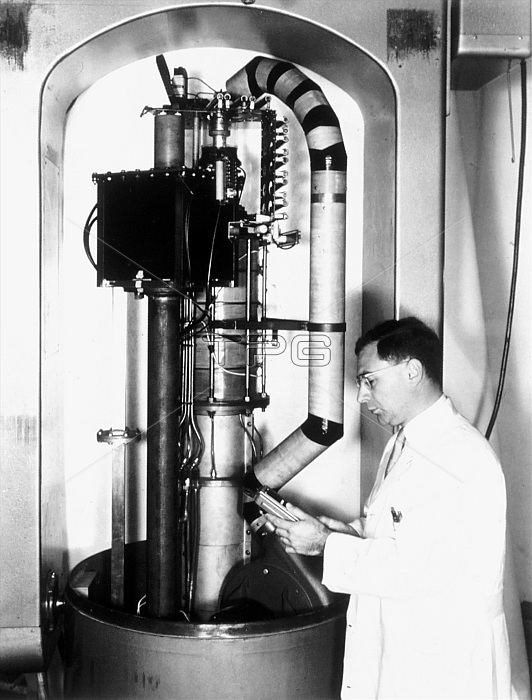
Kaplan with an early model of the Linear Accelerator developed to treat cancer. Henry Seymour Kaplan (April 24, 1918 - February 4, 1984) was an American radiologist. He earned his degree from Rush Medical College in Chicago, after which he trained at the University of Minnesota, Yale University and the NCI. He said he became interested in oncology after his father died of lung cancer. Together with Edward Ginzton, he invented the first medical linear accelerator in the Western hemisphere while he worked at the Stanford University Medical Center of Stanford University. The machine was first used in 1955, six months after another model was first used in England. The first patient treated by Kaplan was Gordon Isaacs, who suffered from retinoblastoma of his right eye, and the disease threatened his left eye. The patient survived into adulthood with normal vision in his left eye. Kaplan's main focus was on Hodgkin's disease, which was fatal before radiation therapy was used. He was the first radiologist elected to the National Academy of Sciences in 1972. In 1979, he received the Charles F. Kettering Prize from the General Motors Cancer Research Foundation. He died in 1984 at the age of 65 after a five month battle against lung cancer. No photographer credited, dated 1950.
| px | px | dpi | = | cm | x | cm | = | MB |
Details
Creative#:
TOP22171307
Source:
達志影像
Authorization Type:
RM
Release Information:
須由TPG 完整授權
Model Release:
No
Property Release:
No
Right to Privacy:
No
Same folder images:

 Loading
Loading